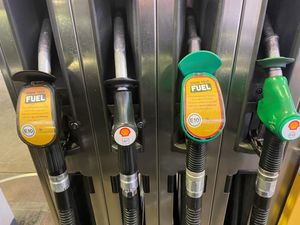Fuel retailers accused of exploiting General Election focus
The RAC said prices for petrol and diesel in Britain are ‘far higher than they should be’.

Fuel retailers are exploiting the focus on the General Election by keeping their margins “persistently high”, a motoring group has claimed.
The RAC said prices for petrol and diesel in Britain are “far higher than they should be” as wholesale costs have fallen since the end of April.
The average price of a litre of petrol at UK forecourts is 146.3p, which is “5p more expensive than it should be” given Northern Ireland is charging 141.1p for the same product, according to the company.
Meanwhile the UK has had Europe’s most expensive diesel for seven weeks, with a litre costing an average of 151.5p.
In Northern Ireland the price is nearly 10p lower, at 141.9p.
RAC figures show retailers’ margins – the differences between what they paid for fuel and the pump price – are 14p per litre for petrol and 16p per litre for diesel.
The long-term average for both fuels is 8p per litre.
RAC head of policy Simon Williams said: “Margins are once again staying persistently high, and drivers are paying the price.
“Our data clearly shows that pump prices haven’t fallen in line with the reduction in wholesale prices, so drivers across the UK – with the exception of those in Northern Ireland where fairer prices are charged – are once again losing several pounds every time they fill up.
“We believe there’s no good reason for retailers in Great Britain not cutting their prices at the pumps far further.
“We can only think they’re hoping no one will notice due to the distraction of the General Election.
“We hope that the Competition and Markets Authority (CMA) is aware of what is going on and will use this to bring retailers into line as soon as it’s able to.”
Pump prices are generally lower in Northern Ireland than the rest of the UK partly because of competition from forecourts in the Republic of Ireland.
Independent fuel retailers in the UK have said they are facing cost increases from various factors such as business rates, energy bills and wages.





